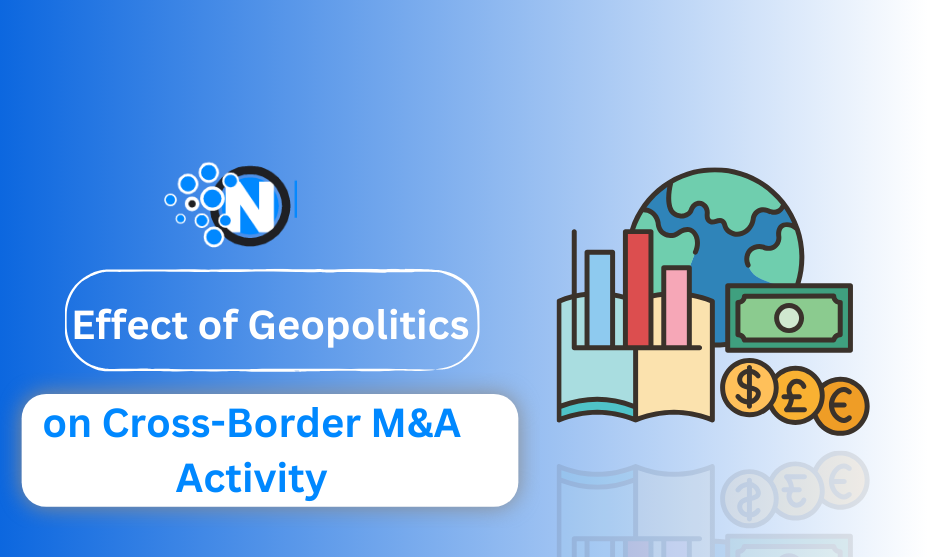The Effect of Geopolitics on Cross-Border M&A Activity

Since geopolitical and financial instabilities are going to be typical in 2024, we can’t predict anything. Actually, this influences trade operations, including mergers and acquisitions.
Beginning with half of 2024, there were almost 21,000 deals with an add esteem of $1.3 trillion, far less than the moment half of 2021 with 34,000 deals that cost almost $2.7 trillion.
Usually, M&A enables companies to develop and conquer new markets. But what to do in times of instability?
Below, we have discussed the impact of geopolitical variances on cross-border M&A activity. On top of that, the article gives M&A insights and methods on how to deal with related dangers.
Types of Mergers and Acquisitions
Companies merge or acquire others for various reasons, and the way they join forces depends on their businesses. Here’s a quick breakdown of the M&A types:
- Horizontal. In the same market, two companies offering similar products might choose to merge to increase their market share and reduce expenses.
- Vertical. For example, a company chooses to buy a supplier they get parts from, or the store they sell their products to. As a result, the firm gets more control over the supply chain or distribution network.
- Conglomerate. Two companies in totally different industries, like food and clothing, merge into one big company. In general, this is a riskier strategy, but you don’t rely on just one product category for success.
- Market-extension. In search of new opportunities, businesses can partner with a company in a new location to expand their reach.
- Product-extension. Two companies making products that complement each other, like phones and cases, merge to provide a wider selection for customers.
To get a bigger picture, take a look at detailed infographics on M&A industries and region dispersion.
Source: Deloitte
Impact on M&A Activity: Who Suffers the Most
In 2022, cross-border deals faced huge issues. There wasn’t just one reason, but a whole set of factors that made it problematic for companies to join forces across borders.
For example, something left from the COVID-19 pandemic, like travel restrictions and supply chain issues. Other factors were more political. The ongoing trade tension between the US and China created uncertainty for companies looking to expand across these two economic giants.
Geopolitical instability continues to play a critical role in shaping cross-border M&A activity. These fluctuations add complexities to an already challenging process. In response, companies are turning to M&A advisory services to navigate these uncertainties effectively, which helps them manage risk and optimize deal outcomes. For example, M&A advisory can provide valuable insights and support in strategic planning during uncertain times. More details here: https://mnacommunity.com/insights/what-is-ma-advisory/
Additionally, the Russian war in Ukraine further added more problems. Let’s not forget that economies around the world weren’t exactly on the same page either.
On top of that, Reuters refers to rising interest rates and economic volatility as two more reasons affecting cross-border M&A.
Source: Morgan Stanley
Let’s see how geopolitical events can disturb indeed the most carefully arranged deals. This was a classic vertical merger example between Glencore, a Swiss commodities exchanging giant, and Rusal, a Russian aluminum manufacturer, back in 2013.
The reason behind this deal? The Glencore needed more control over its aluminum supply.
However, things changed in 2018 when the US forced sanctions on Rusal due to alleged election interference. As a result, Glencore was forced to find other providers in a rush which resulted in related extra costs.
Risk Moderation in M&A: Tips and Considerations
While M&A is an awesome way to develop, things do not always go smoothly. According to statistics, up to 90% of M&A deals fail.
Here’s how to improve your chances for successful mergers and acquisitions:
- Thorough due diligence. Before entering into any deal, take enough time to thoroughly examine the other company’s ins and outs. Be sure you delve into their finances, daily operations, and company culture.
- Cultural integration planning. During deal preparation, you basically bring together two different groups with their own established ways of working. Without a clear plan, you risk clashing cultures, slowing down work, and making the whole merger less successful.
- Transparent communication. Communication is key in any relationship, and mergers are no special case. Let everybody included know what’s going on, why the merger is happening, and how it might influence them.
- Realistic expectations and deal evaluation. Be reasonable about the barriers and potential downsides. You shouldn’t be frightened to drop a contract that doesn’t appear like a great match.
- Building an experienced M&A group. Do not try to predict everything yourself. Make a group including lawyers, bookkeepers, integration pros, and indeed human assets specialists.
- Long-term integration planning. The fact is that real work begins after the deal is signed. Create a clear integration plan for bringing the two companies together. It should address everything from IT systems to employee onboarding.
What Should We Expect from Cross-border M&A in 2024?
2024 tends to be the year of cross-border deals. While domestic mergers and acquisitions may be slowing, businesses, notably in the United States, are focusing on international development. These global ambitions primarily stem from a desire to find new business prospects in new markets.
However, we should expect a new generation of tools to revolutionize M&A activities. In fact, AI can be used to create strategies to protect companies from unexpected swings in currencies and interest rates.
Also, while companies are venturing abroad, they prioritize established markets with stable economies. For example, the US, Canada, and Europe increase their M&A activity as businesses select familiar and safe territories.
On top of that, some industries became especially popular for cross-border deals. In healthcare, for example, companies might be racing to buy each other up because of expiring drug patents. This constant pressure to develop new treatments may trigger a wave of M&A.
Key Takeaways
- Cross-border M&A is on the rise in 2024 because US companies seek new markets.
- Geopolitical uncertainty leads to a slowdown in deals compared to previous years.
- Companies prefer established markets with stable economies for cross-border deals.




